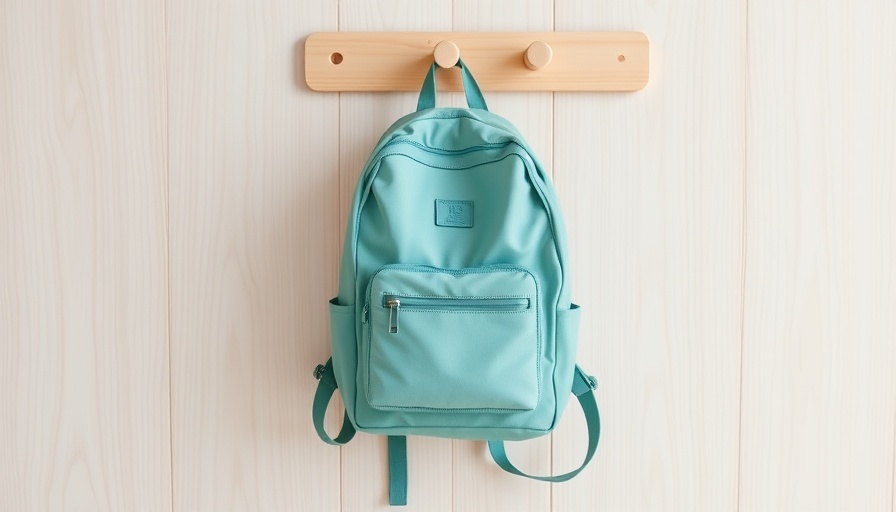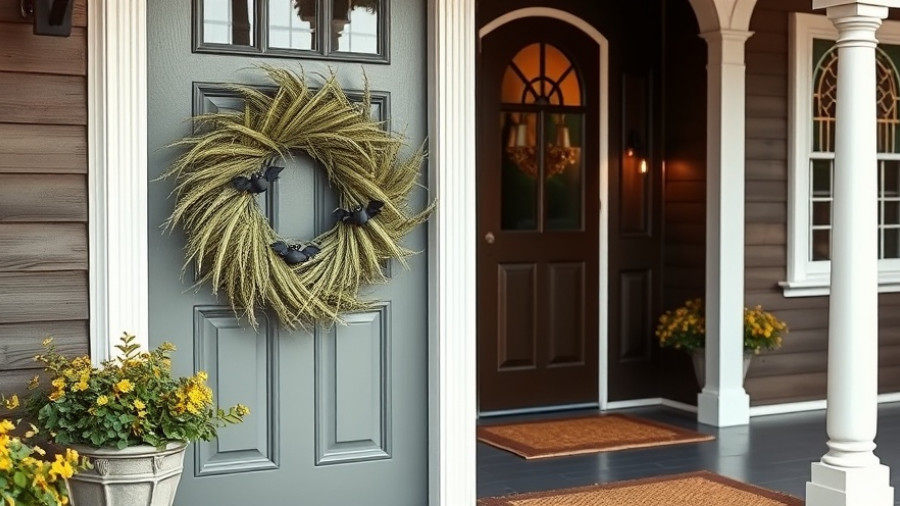
Unlocking Space: Smart Backpack Storage Ideas for Small Apartments
If you live in a cozy California apartment, you’re likely familiar with the 3 o’clock chaos when your children return from school—backpacks, lunchboxes, and shoes scattered everywhere. With limited space and no mudroom, keeping your home organized can feel like a daunting task. However, creative backpack storage solutions can transform your living space, offering both functionality and ease.
Transform Chaos to Order: The Importance of Backpack Storage Solutions
Implementing a purposeful storage system for backpacks will not only clear your home of clutter but will also help instill organizational habits in children. With so many responsibilities on your plate, especially as a parent, reclaiming control of your home environment can alleviate stress and make everyday routines smoother. Understanding how to organize space efficiently enables you to maximize what little you have.
1. Peg Boards: Flexible and Functional
One of the most innovative solutions for managing limited space is a pegboard set-up near the entryway. This adaptable wall feature can be customized with hooks for backpacks, baskets for small items, and even shelves for accessories. “Strong pegboard hooks can comfortably hold the weight of backpacks without damaging your walls,” emphasizes professional organizer Shiffy Goldstein. It’s an ingenious way to utilize vertical space while accommodating the various sizes and weights of children’s backpacks.
2. Dedicated Drop Zone Cabinets
Creating a 'drop zone' in your entryway can work wonders for keeping things organized. Customized cabinets can fit in tight spaces and come with designated sections for each family member. They’re not just for backpacks; these cabinets can include compartments for shoes, jackets, and even paperwork. Goldstein suggests that crafting this space reduces the daily chaos, making it easier to prepare for the busy mornings that follow.
3. Backpack Closets: A Budget-Friendly Alternative
Don’t have need for a dedicated mudroom? A simple closet can be transformed into a backpack haven. By installing hooks and shoe organizers, a small closet can neatly accommodate several backpacks and pairs of shoes. “Utilizing available space ensures that even the coziest apartment can have a functional storage area,” says Goldstein.
4. Over-the-Door Storage: Creatively Utilizing Door Space
If closet space is still limited, over-the-door hanging racks are another great option. Easy to install, these metal hangers can hold multiple backpacks and can also support other items like purses or lunch boxes. There’s no need to sacrifice valuable floor space; instead, you’ll have your belongings organized in perfect view.
5. Repurposed Lockers: Vintage Charm with Practicality
For a charming solution that additionally saves space, consider repurposing old lockers. These can add a stylish touch to your decor while serving as a multi-functional storage solution for backpacks, jackets, and more. Plus, you can paint them in colors that match your home’s aesthetic for a cohesive look.
6. Smart Use of Wall Space
Maximize your storage by incorporating wall-mounted shelves or hooks. These can be placed strategically near the entryway or any area you frequently use. Wall storage keeps backpacks off the floor, provides additional shelving for important items, and can be designed to blend in seamlessly with your personal style.
7. Hidden Storage Solutions: The Great Under-Bench Space
Don’t neglect the often unused space beneath your benches or coffee tables. Utilizing this area with storage baskets or bins can keep your items tidy while adding a decorative element. This approach serves dual purposes, offering both aesthetic enhancement and functional organization.
8. Create a Personalized System for Each Child
No two kids are the same, and their storage needs can vary vastly depending on their activities and interests. Consider personalizing storage solutions with labeled sections and differing storage options for each child, making it more engaging and easier for them to understand where things go.
Embracing Orderly Living: Why Backpack Storage Can Improve Your Daily Routine
Organizing your space does more than just clear clutter; it fosters an atmosphere of calm and efficiency. Simplifying daily routines by implementing these backpack storage solutions can lead to less stress, especially during school days. Your children will also grow to appreciate their belongings more when they have designated spaces, instilling lifelong organizational skills.
Take Action for a Clutter-Free Home!
Ready to transform your home into a clutter-free paradise? Implement some of these smart backpack storage ideas and experience the positive impact on daily life. By creating designated spots for backpacks, you can usher in a new era of organized living, making your home a serene retreat amidst the chaos of daily life.
 Add Row
Add Row  Add
Add 




Write A Comment